Radio electronic war in Vietnam
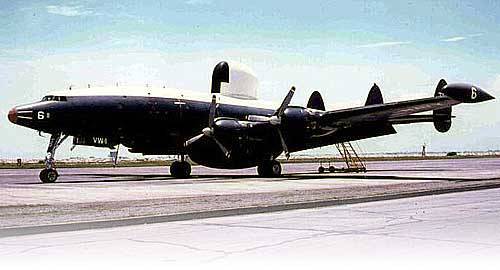
During the entire period of the Vietnam War, the Americans faced the most acute problem of isolating South Vietnam from the North - Democratic Republic of Vietnam (DRV). On the vast system of communications, called the Ho Chi Minh trail, South Vietnamese communists were supplied weaponmilitary equipment (including Tanks), supplies, regular units of the DRV army were transferred. For American pilots, a significant problem was the discovery of trucks and other vehicles, as well as the roads themselves. The task was not an easy one - the Vietnamese were experts in disguise and visual observation from the air often did not produce any results. The anti-aircraft cover of communications in those years was not so strong as to pose a serious threat to jet aircraft. The DShK machine guns were most often encountered - a very effective weapon for fighting helicopters, but for the Phantoms and Thunderchifs they did not pose such a serious threat. The situation changed when the Strela-2 man-portable air defense systems appeared in South Vietnam, and the most important sections of the roads were covered by anti-aircraft guns with radar guidance. In addition, transportation began to be carried out at night. To reduce the loss of aircraft and increase the effectiveness of sorties, careful reconnaissance was necessary. Intelligence intelligence fell away for two reasons: the general hatred of the Vietnamese towards the Yankees, as a result - it was extremely difficult to recruit agents; even a recruited agent could not transmit information in real time. Remained intelligence by technical means. According to the Igloo White program, several types of remote sensors were developed using various physical principles for obtaining information from the battlefield or from enemy rear lines.
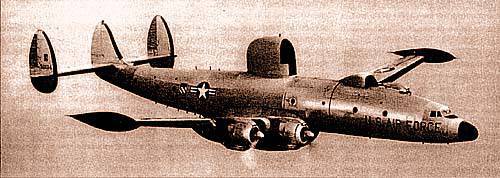
The first step was the use of acoustic sensors. The concept of using such devices, like the sensors themselves, was borrowed from the Navy. Submersible buoys with acoustic hydrophones have been successfully used in navy to detect submarines for a long time. The first Aquabuy sensors, 91 cm long and 12 cm in diameter, weighed 12 kg. These were standard naval radio-acoustic buoys in which hydrophones were replaced with microphones. Buoys were dropped from aircraft by parachute above the jungle. A camouflaged parachute clung to tree branches and it was rather difficult to find a buoy suspended in the tree crown. The built-in rechargeable battery provided information transfer within 30-45 days. The following began to apply specially designed seismic sensors that respond to shaking of the soil from passing near the transport. The 11 kg ADSID sensors were dropped from aircraft without parachutes. The sensor case, made in the form of a pointed missile, buried 20-25 cm in the ground when it fell, only a wire antenna remained on the surface, resembling an ordinary bush. The third type of sensors, “Akuside,” weighing 17 kg, used both principles: acoustic and seismic. The microphones were turned on automatically after the seismic signal or radio signal to confirm the information. As a result, the operating time of microphones, which consumed a lot of electricity, decreased sharply, respectively, the autonomy of the entire device increased to 90 days without loss of information quality.

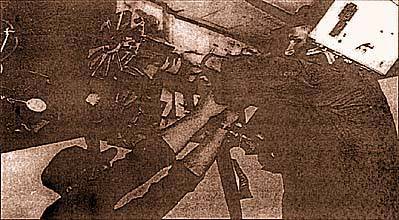
The Igloo White program, better known in the US forces as the McNamara Wall (named after the then US Secretary of Defense), provided for the creation along the demilitarized zone of a continuous barrier of electronic sensors, minefields interspersed with strongholds occupied by American or South Vietnamese troops. Initial work on the creation of various sensors under this program began in 1966. Officially, the McNamara Wall information system was put into operation and transferred to the Air Force on January 1, 1971. For the first time in Vietnam, sensors were used in the defense of Khe Sana in November 1967. In the city located near the demilitarized zone, there was a large base of the Marine Corps. Viet Cong formations surrounded the base and held it under siege until February 1968. Under these conditions, it was very important to stop the supply of partisan units besieging the city. This task was entrusted to Aviationand so that strikes were not delivered from scratch, a significant number of Akvabuev were scattered around the city. Engaged in this case 12 aircraft OR-2 "Neptune" from the US Navy. For patrol crews, the installation of acoustic buoys is a common thing, anti-aircraft fire from the ground was unusual. The Neptune piston was too bulky and vulnerable, and three planes were shot down from January to February. In May, the Neptunes replaced the reactive Phantoms. Flying at low altitude and medium speed for their pilots was also not a gift, but still the risk of losses from fire from the ground was significantly reduced. At first, flights to the installation of sensors were carried out only in clear weather. There was an observer on one of the aircraft, fixing the place where the first buoy fell on a smoke bomb, which was reset along with the sensor. Subsequently, a method was developed for determining the location of discarded buoys according to the onboard Doppler navigation system, and flights began to be carried out in any weather. The number of scattered sensors increased year by year; So, if in 1969 5000 devices were exhibited, in 1972 - more than 40000.
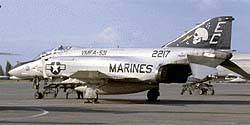
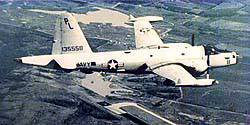
During the war years, a significant area of South Vietnam was sown with sensors of all types, but most of them were along the Ho Chi Minh trail and the border with the DRV. The sensors were installed half a dozen cases, the information from them still needed to be processed and transmitted already in the form of specific data to the combined-arms headquarters and in the part of strike aviation. Transmission of radio signals from sensors to information processing points was carried out by specialized Lockheed EC-121R and Beech "Debonares" aircraft in the EC-121 "Pave Eagle" variant, the latter were also used in unmanned version. Information was processed in mobile computing centers, usually deployed on the territory of large air bases. The heart of the center was the most advanced at that time IBM 360-65 mainframe. The data was transmitted directly to the air units for immediate response and to the headquarters to assess the activity of the movement of the enemy's transport and determine the locations for storing goods and parking equipment.
The system of the exposed sensors together with the computing center gave nevertheless very relative information. Even if the crew was immediately transferred to the sortie by strike aircraft, it still took some time before the aircraft appeared over the path, the trucks had time to leave, and they had to be searched again. The imperfection of the navigation systems gave, in fact, a double mistake: the first time when tying sensors to the locality, the second time when the aircraft reached the target. The total error could reach several hundred meters. And finally, the main traffic flow along partisan roads was at night.
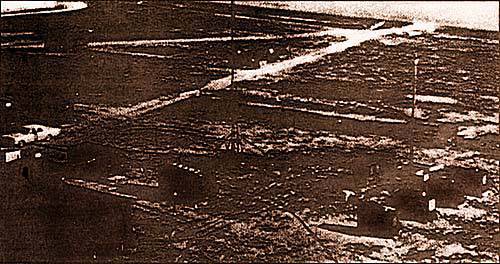
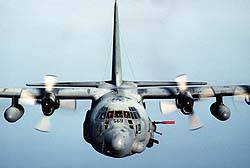
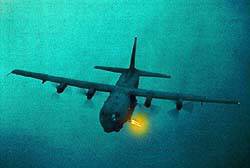
The most effective aircraft for fighting with trucks were the “ganships” - the AC-119, AC-47 and AC-130 transporters, bristling with cannons and machine guns, and the B-57G “Canberra” aircraft also performed well. To detect targets at night, many of these aircraft were equipped with television systems capable of operating in low light conditions LLLTV, FLIR infrared front hemisphere infrared viewing systems and the Black Crow system, which responds to electromagnetic radiation, for example, pulses from the system ignition car. For normal operation, the LLLTV system required an additional natural or artificial light source. So, the truck could be seen if there was at least a quarter moon in the sky. The FLIR system did not require extraneous light sources, it reacted to thermal radiation. It was one of the first aviation night vision systems (the system, bearing the same name and installed on the AN-64A Apache helicopter, was still very far away), and its sensor responded only to frankly warm objects, such as running car engines or gun-warms heated by firing. The greatest effect was given by the use of all three systems at the same time, however, they were not tied into a single on-board complex, but served by operators, therefore, the results of their work depended to a large extent on the qualifications of the service personnel. The use of an electronic information system consisting of sensors, repeater planes and computer centers in conjunction with the “Ganships” equipped with night vision systems allowed a threefold increase in the number of cars destroyed on the Ho Chi Minh trail while reducing their own losses. During the period from November 1969 to April, 1970 5950 trucks were destroyed, and after installing the information system sensors on the roads, from November 1970 to April 1971, almost 14000 vehicles were installed.
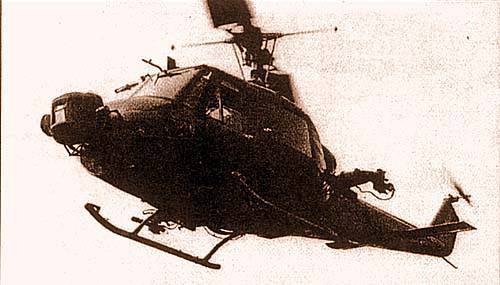
Thermal imagers were also installed on the Mohawk OV-1 aircraft, which patrolled the Mekong Delta. These aircraft made combat missions, usually paired with the AH-1G “Hugh Cobra” combat helicopter or with an armed Iroquois variant. The plane detected sampans and directed attack helicopters on them. The effectiveness of such actions was very high, sometimes it was possible to interrupt water transportation altogether. It would be logical to install night vision systems on helicopters, which was done. UH-1 helicopters were equipped with AN / AAQ-5 passive infrared turret systems. Helicopters with IR systems did not receive widespread in Vietnam, although there is evidence that several vehicles took part in the hostilities. The installation of infrared and TV systems on the Hugh Cobras did not go beyond the flight test stage, but at the same time one cannot exclude that one or two Cobras equipped with infrared and TV systems flew over Vietnam. The use of night vision in helicopters in Indochina was not as wide and effective as on airplanes. This is partly due to the more stringent mass-dimensional requirements for helicopter systems compared to aircraft. The use of the first experimental systems AN / AAQ-5, CONFICS and ATAFCS marked the beginning of work on the creation of the AN-64A Apache helicopter TADS / PNVS system, which has become a classic. In Vietnam, helicopter pilots widely used mainly primitive army speakers and the XM-3 chemical system "People Sniffer" (literally - "sniffing people"), which signaled the presence of people in light buildings like bamboo huts.
The army has developed its own types of sensors for infantrymen. The need for them was caused by the focal nature of the fighting in South Vietnam. Army units were located in fortified strongholds and only occasionally made forays into the jungle. The Viet Cong fighters kept the garrisons of the fortified villages under constant pressure, an attack or shelling could follow at any time. The use of sensors deprived the partisans of surprise. The most often used sensors are miniSID, microSID and DSID, they all worked on the ancient, as the world principle of "grabbing the string", stretched at a small height above the ground. The signal from the actuated sensor was transmitted by radio to the reference point. Especially for small units, the PSID system was created, consisting of four seismic sensors connected by a common cable with a radio transmitter. The radio signal could be received at a distance of up to 500 m. One of the Yankee enthusiasts spoke about this system: “PSID is easy to use, unpretentious, reliable and has a small size and weight, I wanted to have twelve sets of this system in the infantry compartment instead of twelve sets in battalion. "
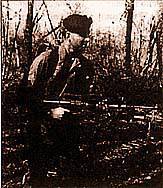
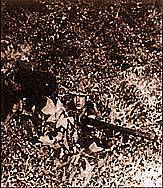
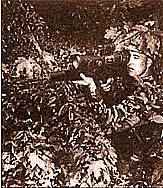
Army units also manually installed aviation sensors developed under the Needle White program. In June, 1969 in the battles for Crook, located in 80 km from Saigon, units of the 25 Infantry Division established a large number of "aquabuy" and "aquarid". Information from them, along with the use of individual night-vision systems and compact radars, made it possible to direct combat helicopters and fighter-bombers very precisely at partisans and to correct artillery and mortar fire. As a result, with the nightly attacks of the front edge of the defense of the American infantry, a much smaller number of Viet Cong reached. During the three-day fighting, 402 was killed by a Vietnamese, while the 25 Division lost 25 people to the wounded and one killed.
Partisan mines brought the big trouble to the Americans; on average, one division was losing them to 70 vehicles every month. Installing acoustic and seismic sensors along one of the 56 roads in seven of the most dangerous places allowed detecting mining sites, as a result, car losses were halved, and several teams of Vietnamese saboteurs were destroyed by artillery fire.
Viet-Kong preferred to fight at night: Americans were lost at night, there was an irrational fear of soldiers. The enemy was watching over every tree. Partly to overcome the fear of the night forest helped a variety of individual night vision systems. In Indochina, Americans for the first time widely used illumination sights on electron-optical image amplifiers. AN / TVS-2 sights with sevenfold reinforcement weighed 7,2 kg and mounted on the barrels of machine guns and light guns. On a starry night, they had a range of up to 500 m, and if there were still stars and the moon, then 1000 m. The simpler AN / PVS-2 sights with fourfold amplification weighed 2kg and M-1 and M-16 rifles were installed, the built-in battery ensured continuous operation image intensifier during 72 hours. The AN / TVS-4 night observation systems were the most powerful, providing sevenfold image enhancement at a distance of 1200 m. The device weighed 17 kg, mounted on a tripod or mounted on a jeep. Infantry used chemical sensors E-63 "People Sniffer", reacting to the odors of the human body. The sensor itself was installed under the barrel of the rifle, and the processing equipment connected to it with a flexible cable was placed in the shoulder container.
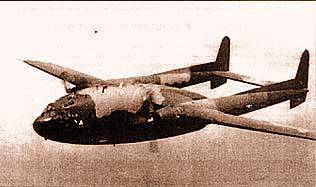
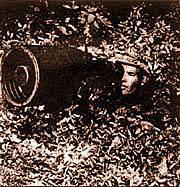
The fighting in Indochina was the first war, where various electronic sensors and systems were used along with traditional weapons. The first generation of such systems had many flaws, so, the illumination sights had a lot of weight and size, a short range, and the sensors very often gave a false alarm. In addition, after the first successful experiments with the use of sensors, the personnel had a sense of false confidence regarding the control of approaches to support points. However, it turned out that the remote devices during an erroneous installation do not fix all movements in the jungle. After about two years of using sensors, the euphoria of initial success has passed, the Americans realized that various technical tricks are not a panacea for the war in the jungle. Nevertheless, the experience of Vietnam has demonstrated that in the hands of professionals, electronic equipment has the highest efficiency, especially when solving intelligence tasks and protecting facilities.
Information